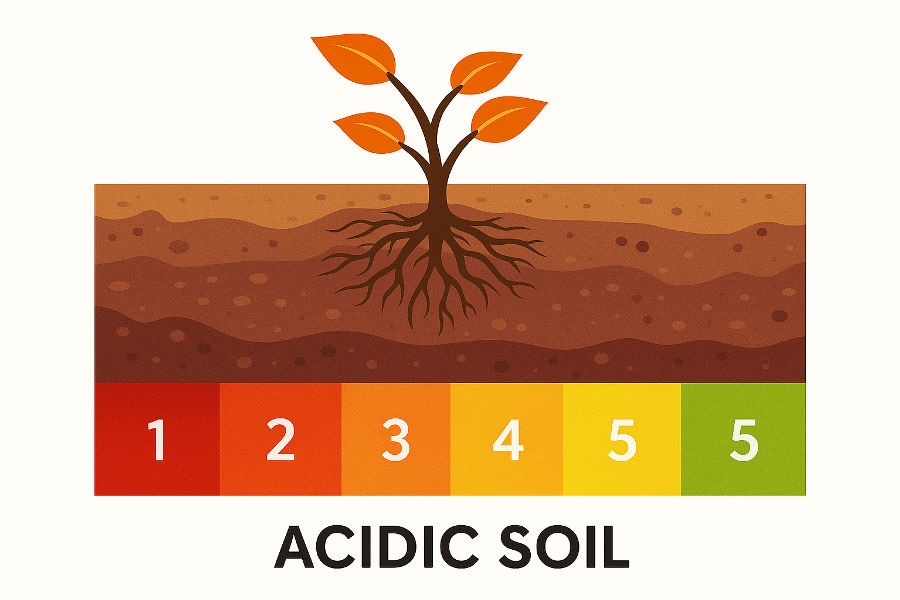Acidic Soil: Causes, Effects, and Solutions
Acidic soil has a low pH (below 6.5), which affects nutrient availability and plant health. It is common in regions with high rainfall, where essential nutrients like calcium and magnesium are leached away, leading to poor crop growth.
Causes of Soil Acidity
-
Excessive Rainfall – Leaches essential nutrients.
-
Overuse of Chemical Fertilizers – Ammonium-based fertilizers increase soil acidity.
-
Decomposing Organic Matter – Produces organic acids.
Effects on Crops
-
Nutrient Deficiency – Limits availability of phosphorus, calcium, and magnesium.
-
Toxicity Issues – Increases aluminum and manganese toxicity, harming plant roots.
-
Reduced Microbial Activity – Affects soil fertility and decomposition.
How to Manage Acidic Soil
-
Lime Application – Agricultural lime (CaCO₃) or dolomite neutralizes acidity.
-
Use of Gypsum – Improves soil structure without altering pH significantly.
-
Balanced Fertilization – Avoid excessive ammonium fertilizers and use pH-neutral fertilizers.
-
Organic Matter Addition – Compost and manure improve buffering capacity.
Managing soil pH is essential for better nutrient uptake, plant health, and higher yields. Regular soil testing helps maintain optimal conditions for crops.
